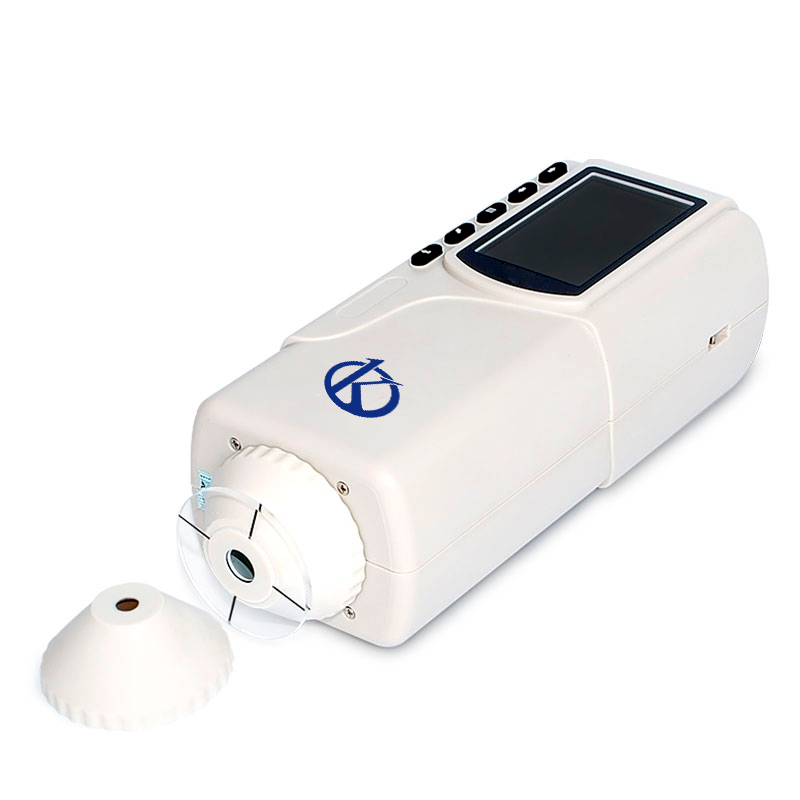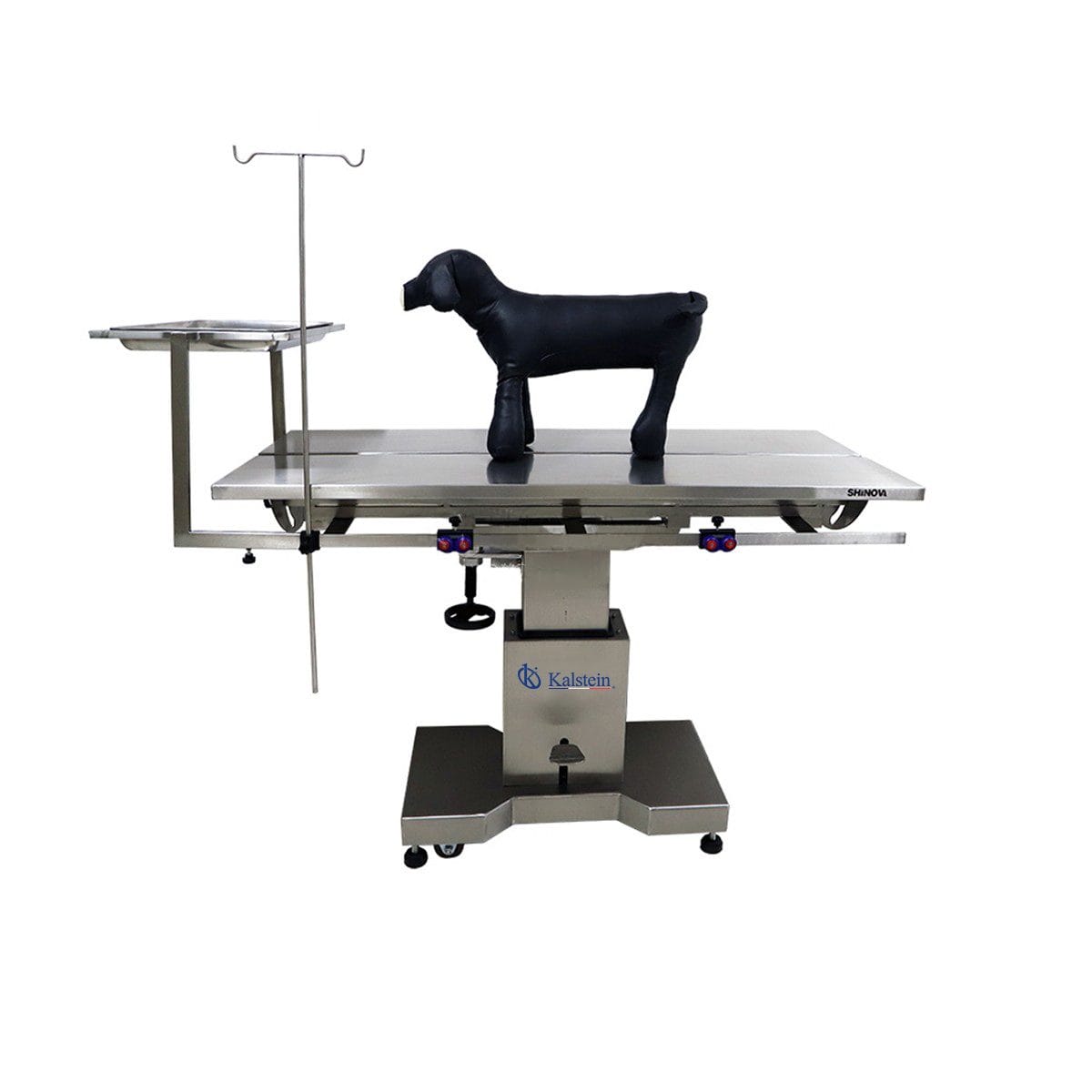The veterinary rebound tonometer is an essential tool for the ocular care of our pets. This device, utilizing advanced technology, allows for precise intraocular pressure (IOP) measurement without causing discomfort to the patient. Using it, I have noticed the ease of operation and the accuracy of the readings, which gives me great confidence in my diagnoses.
The rebound technology is particularly useful because it eliminates the need for topical anesthesia, making the procedure more comfortable for both the animal and the veterinarian. Additionally, its ergonomic and lightweight design makes it easy to use for extended periods without causing fatigue.
Are you yearning for top-tier medical equipment, ready to enhance the efficiency of your laboratory? Visit https://kalstein.co.uk/category-product/veterinary-sector/veterinary-tonometer/ to explore our high-end catalog, packed with the best finds at the most competitive prices. Excellence marks our brand, we innovate and manufacture high-precision equipment, both reliable and durable to meet your needs. Why wait? Make your quick and secure online purchase, take the leap towards the future of medical technology today. https://kalstein.co.uk/
Features of the Veterinary Rebound Tonometer
This type of tonometer stands out due to several key features that make it indispensable in any veterinary clinic. Firstly, its advanced positioning system, such as the ActiView™ from Tono-Vera, guides the user to the apex of the cornea, ensuring precise IOP readings. This intuitive system provides a color view of the eye and promotes precise alignment before taking the measurement, resulting in more objective and repeatable results.
Another notable feature is the device’s ability to operate without routine calibration, reducing maintenance and ensuring it is always ready for use. Additionally, many models are rechargeable and come with Bluetooth connectivity to facilitate data transfer and software updates.
Why Does the Veterinary Rebound Tonometer Cost This Much?
The price of these devices might seem high, but it is important to consider what you are getting in return. Rebound tonometers are designed with cutting-edge technology to ensure precision and comfort in every use. For example, the Reichert Tono-Vera Vet is priced around $5200 due to its patented positioning system and its ability to take accurate measurements without the need for anesthesia.
Moreover, the durability and support offered by these brands justify the cost. The ergonomic and lightweight design facilitates handling, and the inclusion of rechargeable batteries and advanced connectivity makes these devices a long-term investment for any veterinary practice.
Compare the Veterinary Rebound Tonometer with Similar Products
Comparing Kalstein’s rebound tonometer with others on the market, such as the Tono-Vera by Reichert and the Icare Tonovet Plus, we find several advantages and disadvantages.
The Tono-Vera by Reichert stands out for its ActiView™ system, which guides the user to obtain precise and repeatable readings. This device also features Bluetooth for easy data transfer. On the other hand, the Icare Tonovet Plus is noted for its ease of use and ability to perform measurements without frequent calibration, similar to Kalstein.
However, Kalstein offers an excellent price-quality ratio and an intuitive design that makes it accessible for users with different levels of experience. Additionally, compatibility with different types of rechargeable and AA batteries offers additional flexibility not always found in other models.
Pros and Cons of Veterinary Rebound Tonometers
|
Pros |
Cons |
|
Accurate and repeatable measurement |
High initial cost |
|
No need for topical anesthesia |
Requires careful handling |
|
Easy to use |
May need additional accessories |
|
Ergonomic design |
Limited availability in some regions |
|
Bluetooth connectivity (in some models) |
Requires periodic maintenance |
|
Quick results |
Some models are heavy |
|
Compatible with rechargeable and AA batteries |
Can be costly to repair |
|
Intuitive interface |
Requires initial training |
Advantages of These Veterinary Rebound Tonometers
Among the main advantages of veterinary rebound tonometers, the precision in IOP measurements without the need for anesthesia stands out. This not only makes the process safer and more comfortable for the animal but also improves the efficiency of the veterinarian by allowing multiple measurements to be taken quickly. The Bluetooth connectivity of some models facilitates data management and integration with electronic health systems.
Another advantage is their ergonomic and lightweight design, which allows for prolonged use without causing user fatigue. Additionally, many of these devices do not require frequent calibration, reducing downtime and maintenance costs.
Other Benefits of These Veterinary Rebound Tonometers
Besides the already mentioned advantages, these devices often come with useful accessories such as durable carrying cases, charging bases that also store and dispense probes, and interchangeable battery systems. These extras ensure the tonometer is always ready to use and easy to transport for home visits.
The availability of training kits and technical support also ensures that users can maximize the device’s potential from day one, improving the quality of ocular care provided to patients.
Learn About Opinions on Veterinary Rebound Tonometers
Users often highlight the ease of use and accuracy of veterinary rebound tonometers. For example, many veterinarians appreciate the rebound technology that eliminates the need for anesthesia, making the process safer and more comfortable for animals. Reviews frequently mention the durability and ergonomic design of these devices, allowing for easy and effortless handling.
Compared to other products on the market, veterinary rebound tonometers from brands like Kalstein, Reichert, and Icare are highly valued for their innovation and reliability. Users often praise the speed with which precise results can be obtained, enhancing efficiency and quality of care provided.
Frequently Asked Questions
Do veterinary rebound tonometers need regular calibration?
No, most veterinary rebound tonometers, such as the Tono-Vera by Reichert, do not require routine calibration, saving time and reducing maintenance costs.
Do rebound tonometers require topical anesthesia?
No, one of the major advantages of these devices is that they can measure intraocular pressure without the need for topical anesthesia, making the process more comfortable for the animal.
What type of batteries do veterinary rebound tonometers use?
Many models are rechargeable and some, like those from Kalstein, are compatible with both rechargeable and AA batteries, offering flexibility and convenience.
How is data transferred from veterinary rebound tonometers?
Advanced models like the Tono-Vera Vet by Reichert come with Bluetooth connectivity, allowing for quick and easy data transfer to a computer or data management system.
What is included in the veterinary rebound tonometer kit?
Kits typically include the tonometer, a carrying case, a charging base, rechargeable batteries, measurement probes, and in some cases, a training manual and technical support.
How accurate are veterinary rebound tonometers?
These devices are designed to provide accurate and repeatable intraocular pressure readings, making them reliable for veterinary diagnostics. The rebound technology and advanced positioning systems, like ActiView™, ensure precise measurement every time.
Conclusions About These Veterinary Rebound Tonometers
Veterinary rebound tonometers represent an advanced and reliable solution for measuring intraocular pressure in animals. Their intuitive and ergonomic design, combined with cutting-edge technology such as Bluetooth connectivity and advanced positioning systems, make these devices indispensable in any veterinary practice.
Despite their initial cost, the advantages in precision, comfort, and efficiency justify the investment. With options that eliminate the need for topical anesthesia and features that facilitate their use, these tonometers significantly improve the quality of ocular care for our patients.




